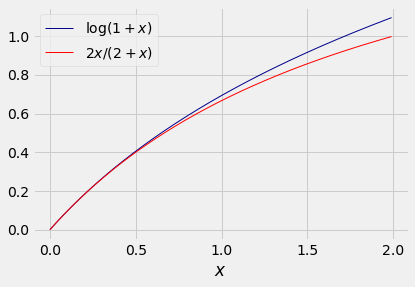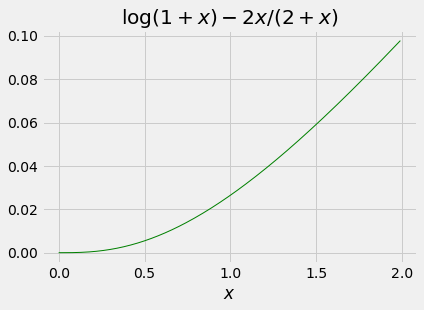The basic properties of exponential and logarithms used for exponential approximations

Limits and Approximations
For all
The expansion as a sum implies that
Here the symbol
You can see this approximation in the figure. Around
Take
To spot this in the figure, look at values near 1 on the horizontal axis. You can see that
For exact values, let
Bounds
-
-
For
- and so on. You get alternating upper and lower bounds as you go further into the series.
In probability theory you will often come across
- For
There are many ways of proving inequalities like this one. One way is to show that the difference between the two sides has the right sign, by noticing that it is
Here are the graphs of

The difference
